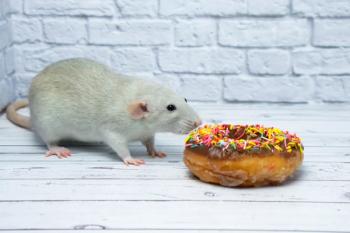
The LCGC Blog: Useful Tips for GC-MS
There are many aspects of analytical science which abound with myth and legend – but gas chromatography – mass spectrometry (GC-MS), and more specifically the electron ionization (EI) process, stands out as the technique which has given rise to the largest number of ‘urban myths’ and misunderstandings.
There are many aspects of analytical science which abound with myth and legend – but gas chromatography – mass spectrometry (GC-MS), and more specifically the electron ionisation (EI) process, stands out as the technique which has given rise to the largest number of ‘urban myths’ and misunderstandings.
I’ve gathered a few notes here to act as a reference guide to this wonderful technique in the hope that it will inspire you to follow a righteous path to mass spectrometric (not spectroscopic!) greatness.
Vacuum and Vacuum Translation
Vacuum is needed to reduce the collisions/reactions with our analyte ions and background gas phase species as well as enabling us to control the flight path of ions using the electrostatic lenses within the ion source and the mass analyzing device.
It is good practice, when using an oil filled roughing pump (the noisy thing on the floor behind the instrument), to ‘ballast’ the oil. This involves partially opening a valve or cap to create a pressure imbalance which vents dissolved gases from the oil in the pump to the atmosphere, restores the quality of the oil and improves the level of vacuum attainable. Bottom line – better vacuum, better sensitivity and reproducibility of both the ion formation and analysis processes.
Important note: make sure that the charcoal trap on the exit of the roughing pump does not become saturated; otherwise any toxic species outgassing from the oil will be released into the laboratory.
Useful conversion factors for vacuum monitoring;
1 atmosphere = 760 torr = 1013 mbarr = 1.013 barr = 1 mmHg
So for a well operating GC-MS instrument
1.3 x 10-9 atm = 1 x 10-6 torr = 1.333 x 10-6 mbarr = 1.333 x 10-9 barr = 1 x 10-6 mmHg
Newer GC-MS systems will use ‘scroll’ pumps which are dry and do not require oil, therefore, ballasting is not required.
Any oil based pump has the tendency to produce a ‘mist’ which can, under certain circumstances, stream back into the analyzer and give rise to certain contaminant ions within the background of the mass spectrum. Typical ions to look for to indicate a problem with oil mist are:
m/z 69, 77, 94, 115, 141, 168, 170, 262, 354, 446
Analyte Ionization
We use a stream of electrons to ionize our analytes and these electrons are produced by heating a metal filament using a current which results in the electrons obtaining 70 electron volts (eV) of energy. These electrons pass through the atomic structure of our analytes, causing large disturbances in the electric fields within the molecule.
If the energy transferred to the analyte molecule is within the ionisation cross section and above the ionization energy, then an electron will be removed from an atom within the molecule - with ease of electron removal following the general trend.
Lone pair electrons (anilline 7.7 eV) < p bonding electrons (ethene 10.5 eV) < s bonding electrons (ethane 11.5 eV).
We have dropped the word ‘impact’ from the name of this technique as in fact there is no physical impact - only a transfer of energy. The reaction scheme is shown in Figure 1.
Figure 1: General reaction scheme for electron ionization (EI) GC-MS.
70 electron volt (eV) electrons are used because they are able to ionize most organic molecules, with the ionization cross section of methane showing an optimum value at 70 eV – so if we can ionize methane which contains only sigma bonds then we can ionize most things. Further, at 70 eV small changes in electron energy do not affect the repeatability of the ionization process and the efficiency of the ionization process is increased to around 0.1% (one molecule in every one thousand is ionized).
When using 70 eV electrons excess energy imparted to the analyte molecule can cause various unimolecular reactions through electronic and vibrational excitement (Figure 2).
Figure 2: Typical fragmentation and rearrangements in EI GC-MS with resulting spectral signals.
There are some very important points to be made regarding the above reaction scheme and spectrum.
- Only positively charged species are seen in the spectrum – neutrals are lost to the vacuum.
- Dissociative rearrangement leads to the formation of a new radical cation and a neutral molecule. The rearranged product will generally appear as an even mass fragment within the mass spectrum and this is very useful for spectral interpretation.
- The time frames involved in ionization and mass analysis (5 µs and 10 µs respectively) means that only certain rearrangement reactions are possible – which again aids to reduce the complexity of mass spectral interpretation. Some common rearrangement reactions include alpha cleavage, induced cleavage, retro Diels Alder, McClafferty rearrangement.
- Whilst concerted processes are typical within the ion source, these typically involve multiple steps of the same rearrangement rather than one rearrangement process followed by another. That is – multiple stages of a retro Diels Alder ring opening reaction are possible but it is rare to have an alpha cleavage followed by a McClafferty rearrangement.
- At the level of vacuum achieved in typical benchtop instruments, the mean free path achieved within the ion source means that reaction with background species or bi-molecular reactions with other analytes of matrix components do not need to be considered.
Identifying the molecular ion within the mass spectrum gives us the molecular weight of the intact analyte.
Energetically labile analytes (those with low ionisation energy) may fragment easily and the molecular ion is lost in the spectral noise. One very elegant method to identify or promote the intensity of the molecular ion is to reduce the energy of the ionising electrons in order to reduce the degree of analyte fragmentation.
Traditionally this would have been accompanied by a drastic reduction in absolute signal to noise and an irreproducible signal – however methods are now available to avoid this loss of ionisation efficiency as is shown in Figure 3.
Figure 3: Promotion of molecular ion using lower ionizing electron energy without traditional loss in signal intensity (Markes International Ltd, Pontyclun, Wales, UK).Ion Source Optimisation
Figure 4 shows an exploded diagram of a typical GC-MS ion source.
Figure 4: Exploded diagram of a typical GC-MS ion source with the repeller highlighted.
The Repeller is used to accelerate the ions formed in the source out into the focusing elements of the source and ultimately into the mass analyzer. In a clean ion source, the potential required by the repeller to achieve a particular target ion abundance for a tune mass will be lower than that required as the repeller plate becomes coated over time with adsorbed neutrals from the analyses undertaken.
The repeller voltage is an excellent measure of source cleanliness and one can typically set a value above which the source will be removed and cleaned as the source may be too dirty to produce fit for purpose data (Figure 5).
Figure 5: Optimization of the repeller voltage during an EI source tune. Ion abundance of fragment ions across a wide mass range are plotted against applied voltage to yield the optimum ‘average’ value.
Finally, whilst autotune routines have their place and are excellent for removing inter-operator variation, the results obtained are often not optimized for the masses of interest within our experiments.
Figure 6 shows that masses other than tune compound masses can be chosen and the important electrostatic elements of the source ‘ramped’ to reveal the optimum values for our analysis.
Figure 6: Optimization for target analyte masses.
In Figure 5, the values of the repeller voltage have been ramped whilst monitoring selected ion masses of the tune compound (note that each mass is individually optimised).
However, Figure 6 shows that by altering the selected masses on which to optimize the repeller voltage, the performance of the ionization process can be very much improved for masses which are closer to that of our analytes. In this case mass 100 Da has been chosen and the repeller voltage optimized which has resulted in an improvement of over 3% in ion abundance.
Depending upon manufacturer, several source components may be optimized in this way, including focusing lens voltages, accelerating and entrance lens voltages.
For more information, contact either Bev (bev@crawfordscientific.com) or Colin (colin@crawfordscientific.com). For more tutorials on LC, GC, or MS, or to try a free LC or GC troubleshooting took, please visit www.chromacademy.com
Newsletter
Join the global community of analytical scientists who trust LCGC for insights on the latest techniques, trends, and expert solutions in chromatography.




